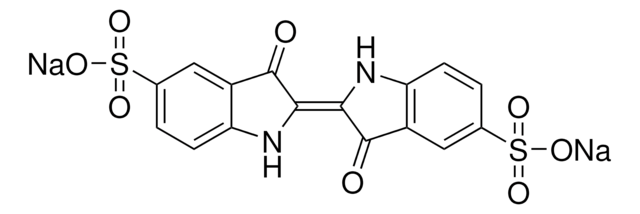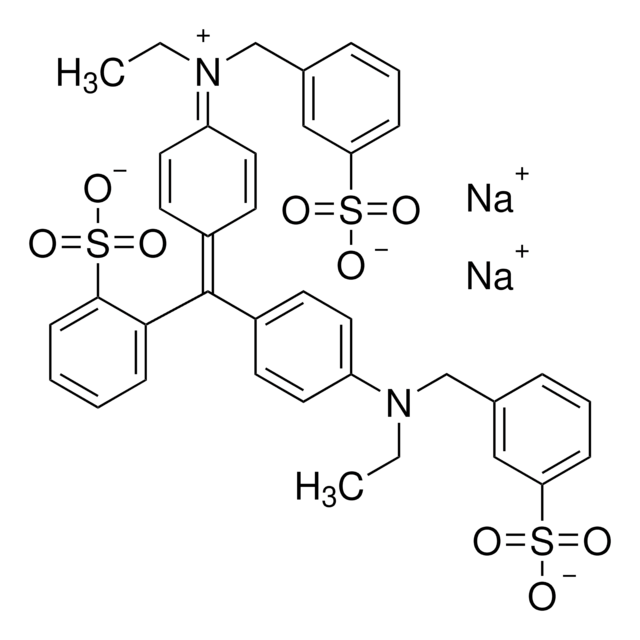81240
Poly(ethylene glycol)
average Mn 4,000, hydroxyl
Synonym(s):
Polyethylene glycol, PEG
Sign Into View Organizational & Contract Pricing
All Photos(1)
About This Item
Linear Formula:
H(OCH2CH2)nOH
CAS Number:
MDL number:
UNSPSC Code:
12352104
PubChem Substance ID:
NACRES:
NA.23
Recommended Products
Product Name
Poly(ethylene glycol), average Mn 4,000, platelets
biological source
platelets
Quality Level
form
powder
mol wt
Mn 3,500-4,500
average Mn 4,000
mp
58-61 °C
Ω-end
hydroxyl
α-end
hydroxyl
SMILES string
C(CO)O
InChI
1S/C2H6O2/c3-1-2-4/h3-4H,1-2H2
InChI key
LYCAIKOWRPUZTN-UHFFFAOYSA-N
Looking for similar products? Visit Product Comparison Guide
General description
Polyethylene glycol (PEG) is a hydrophilic polymer. It can be easily synthesized by the anionic ring opening polymerization of ethylene oxide, into a range molecular weights and variety of end groups. When crosslinked into networks PEG can have high water content, forming “hydrogels PEG is a suitable material for biological applications because it does not trigger an immune response.
Application
Polyethylene glycol (PEG) platelets were used:
- in PEG-directed gene delivery of protoplast transfection and incubation
- to prepare extraction for measuring cytosolic phosphoenolpyruvate carboxykinase (PEPCK) from plant tissues
- as DNA transformation agent in a study of transient gene expression of plant protoplasts, derived from rice leaf sheaths.
- in preparing isothermal assembly buffer and TSS broth preparation for unique nucleotide sequence (UNS)-guided assembly of repetitive DNA parts
- in transformation of DNA into log-phase cells of the budding yeast Saccharomyces cerevisiae.
- as DNA transformation reagent
Other Notes
Polymer networks with grafted cell adhesion peptides for highly biospecific cell adhesive substrates
Storage Class Code
11 - Combustible Solids
WGK
WGK 1
Flash Point(F)
Not applicable
Flash Point(C)
Not applicable
Personal Protective Equipment
dust mask type N95 (US), Eyeshields, Gloves
Choose from one of the most recent versions:
Already Own This Product?
Find documentation for the products that you have recently purchased in the Document Library.
Customers Also Viewed
Oleg Raitskin et al.
PloS one, 14(2), e0211598-e0211598 (2019-02-28)
Molecular tools adapted from bacterial CRISPR (Clustered Regulatory Interspaced Short Palindromic Repeats) systems for adaptive immunity have become widely used for plant genome engineering, both to investigate gene functions and to engineer desirable traits. A number of different Cas (CRISPR-associated)
Shen, Jinbo, et al. "Isolation, culture, and transient transformation of plant protoplasts
Shen J, et al.
Current Protocols in Cell Biology, 2014, 2-8 null
A simple and effective method to encapsulate tobacco mesophyll protoplasts to maintain cell viability
Lei R, et al.
Methods, 24-32 (2015)
Jennifer DeMars Tripp et al.
Yeast (Chichester, England), 30(5), 191-200 (2013-03-14)
Chemical-based methods have been developed for transformation of DNA into log-phase cells of the budding yeast Saccharomyces cerevisiae with high efficiency. Transformation of early stationary-phase cells, e.g. cells grown in overnight liquid cultures or as colonies on plates, is less
Frédéric Sanchez et al.
Genes, 10(5) (2019-05-28)
Ostreococcustauri is an easily cultured representative of unicellular algae (class Mamiellophyceae) that abound in oceans worldwide. Eight complete 13-22 Mb genomes of phylogenetically divergent species within this class are available, and their DNA sequences are nearly always present in metagenomic
Our team of scientists has experience in all areas of research including Life Science, Material Science, Chemical Synthesis, Chromatography, Analytical and many others.
Contact Technical Service




